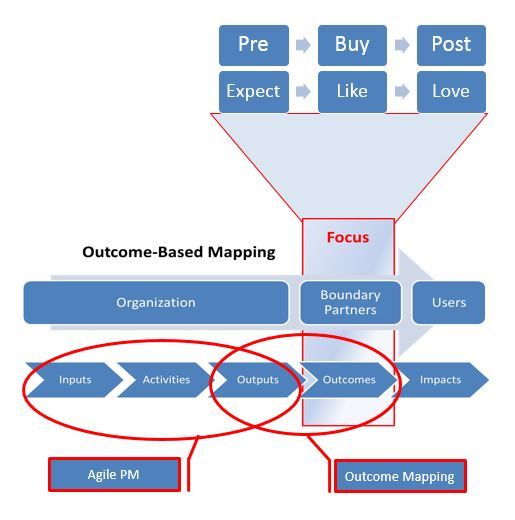Our sales environment is changing. I believe that it can no longer be viewed from the sales and marketing funnels of the past. These funnels market to many and exclude people narrowing down to the ideal organization/person that eventually purchases. I believe we market toward opportunity and build funnels of opportunity versus funnels of exclusion (For more information, Funnel of Opportunity).
To do this, we must via partnerships in new ways forging relationships that allow partners to focus more on their core activities. The challenge is to engage our partners while realizing that each of have a different agenda and objectives. This network of partner and even sometimes unlikely partners, will result in a variety of views on how to accomplish these goals which preclude the notions of effectiveness and efficiency that most of us hold so dear to our heart.
Behavior change is increasingly seen as an important part of the sales and marketing process, but we continue to use customer segmentation and manipulated approaches to guide our customer towards the Holy Grail…our product. Our planning and micro-planning techniques demand certainty which when we have those clean lines of traditional hierarchy seem inevitably simple. We think of that sales and marketing funnel with a direct correlation between buyer and seller. And, we see that chain of command that determines our progress in reaching the decision maker. However, as Mark Twain has said, “It ain’t what you don’t know that gets you into trouble. It’s what you know for sure that just ain’t so.” Those lines, those funnels that we are so certain about, just ain’t so anymore.
Our sales and marketing efforts are just plain messy. They may not be efficient, but they still can be effective. It just means that we need to embrace messiness. We must embrace other organizations at different times and adjust our short-term vision and desired outcomes to fit the situation. We need to construct partnerships for delivering the desired customer outcomes which takes responsibility away from one single vendor and moves it to multiple vendors and most often including the customer. With more partners, it does become increasingly messy.
Traditional sales and marketing funnels can work when there is a single goal with all partners subscribing to the same outcome and deliverable. However, with multiple sign-offs on purchases that likelihood seldom happens within one company let alone multiple companies. The newer approach, that messiness, is less like managing the funnel rather it is more like learning from others and adjusting our behaviors for the advancement of the desired job that is needed to be done. To achieve this, I like to use more of an outcome mapping and agile type project management approach. This results in a monitoring and evaluation versus a typical project delivery style. It is less about planning and doing, more about speculating and exploring. You can read more about these thoughts in 5 Core Sales Concepts of Lean Thinking.
CAP-Do (More Info): What makes CAP-Do so attractive is that it assumes we do not have the answers. It allows us to create a systematic way to address the problems (pain) or opportunities (gain) from the use of our products and services.
Lean Marketing eBooks (More Info): Excerpt from the Lean Marketing House

